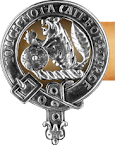1860 Slave Schedule
Line 15-18
William Bane (Bean)
It isn't something we like to discuss very often. And some clients that I have had in the past have asked that I not include any findings of slave trading, or owner, within their ancestry.
Sadly, it is true. Many of us had ancestors who "owned" slaves. Of course, today we think of it as an atrocity to mankind. And rightly so, I am not disputing that point at all! However, let's step back in time for a moment and see what it looked like from our ancestor's point of view.
England had a long history of slavery, long before it made it's way to the America's. And even African's were selling other African's into slavery, or keeping them and owning them. So by the time slavery came to America, just 12 short years after the settling of Jamestown, slavery was a very old tradition. In 1619. farmers began to realize that it was much cheaper to buy a slave than to use indentured servants. And thus, the slave trade was born in America.
Here is the 1860 Slave Schedule for Monroe County, [West] Virginia. We find my great-great-grandfather listed as a slave owner. He is mistakenly listed as William BANE, when the surname was BEAN. How do we know this is an error, and not someone else? We can arrive at this conclusion by looking at the 1860 Census, and finding my ancestor's neighbors here are reflected as his neighbors in the Census as well. Just a misspelled surname.
From this schedule, we find that William Bean had a total of 4 slaves. Taking a wild guess, I would say they are a family. There is a 31 year old female (names were not listed on this schedule, the slaves were listed as you would a farm animal. They were considered chattel.) There is a 28 year old male. A year old female. And a one month old male baby boy.
At the time, it was considered good to "breed" the slaves. Much like cattle are done, matching the best breed of bull to the best breed of cow, one could come up with a bovine of immense strength and stamina. And so it was thought of slaves.
We know from death records that William Bean owned other slaves. Most notable was on 25 April 1858, when a 25year, 5month, 10day old male slave died. The cause of death is listed as biliary fever. This disease is found in horses, dogs and cats that affects the liver. It's cause was from a tick bite. It can affect humans as well. It causes a fever, but is usually only seen in Africa. Doubtless, the coroner (if there was one) simply had no idea what caused this young man to die, and listed it as biliary fever.
It is told that during one particularly cold winter that 2 slaves died, a husband and wife, who were much in love with one another. The ground being frozen outside the cemetery (family was buried inside the fence, and slaves on the outside perimeter), a hole was dug in a corner of the front yard, and the couple who died within hours of one another, were buried in the space with plans to remove them when the ground thawed in the spring, and rebury them outside the Bean cemetery.
As often happens, especially on a busy farm, they were never removed from the yard and re-interred. Great-great-grandmother Rachel chose to plant a Rose of Sharon bush on the grave, to mark it so that the grave would never be disturbed. The bush, which had grown to a huge dimension, was still there in 2007. However, in 2008 when venturing to Waiteville, I noted the bush was gone. And in its place a new gravel driveway had been placed. I suppose the ground was not dug, just grated, and gravel placed atop it. But the two slaves are now interred beneath a gravel driveway. Which is kind of ironic, as so many cemeteries have had parking garages built over them. Even the very kings of England have been located beneath a parking garage! (See the article here regarding finding the grave of King Richard III.)
It is said that we cannot move into our future without first understanding our past. (No, I'm not sure who said that, but I've heard it.)
Jennifer Finney Boylan wrote in "The Long Black Veil":
“You carry the past with you. Even if there's a before, and an after, in your life. It's still the same life. The trick is to build a bridge between that and what comes later.”
Let us move forward. I cannot be held accountable for the ignorance of man to enslave man. But I can try to build a future without prejudice, racism and hate. For me, I always come back to Martin Luther King, Jr.'s I Have A Dream. Let us meet there. Not as black, or white, or red, or yellow, or brown. But as a people. Not as a race. Simply....people.












No comments:
Post a Comment